Discover Vienna after your German course
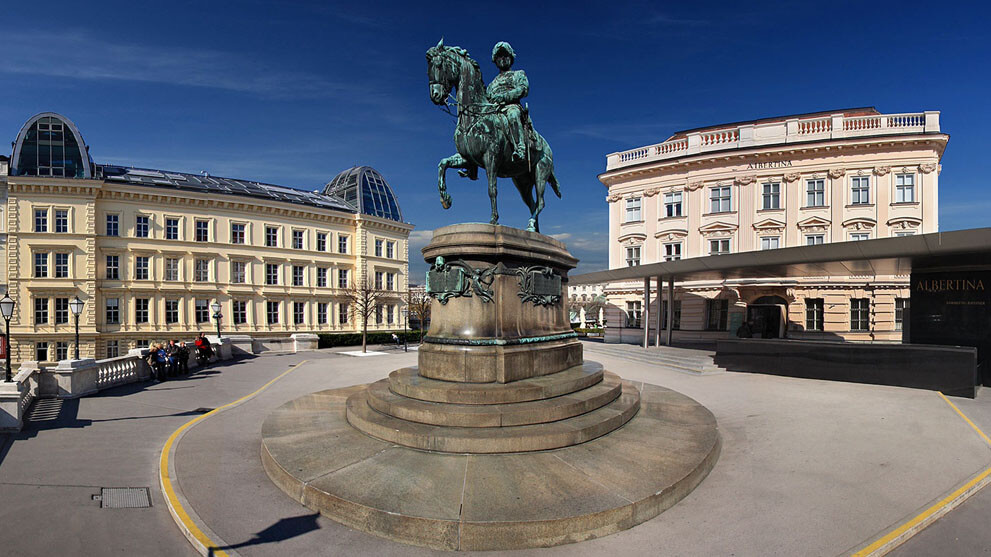
Albertina
The Albertina is a one-minute walk from the DeutschAkademie and is world-famous for its collection of graphic art. It houses the most important prints and drawings from the beginnings of European graphic art around 1400 to the present day - the most famous being Albrecht Dürer's hare.
Address: Albertinaplatz 1, 1010 Vienna
Opening hours: daily 10 am to 6 pm

Belvedere
The Belvedere is located in Vienna's third district and is a baroque palace complex that Prince Eugene of Savoy had built as his summer residence. He used the Upper Belvedere for parties and receptions. He lived in the Lower Belvedere. The park between the two palaces was designed by a garden architect from Versailles. Today, the Upper Belvedere houses the Austrian Gallery and the Lower Belvedere is home to the Austrian Baroque Museum.
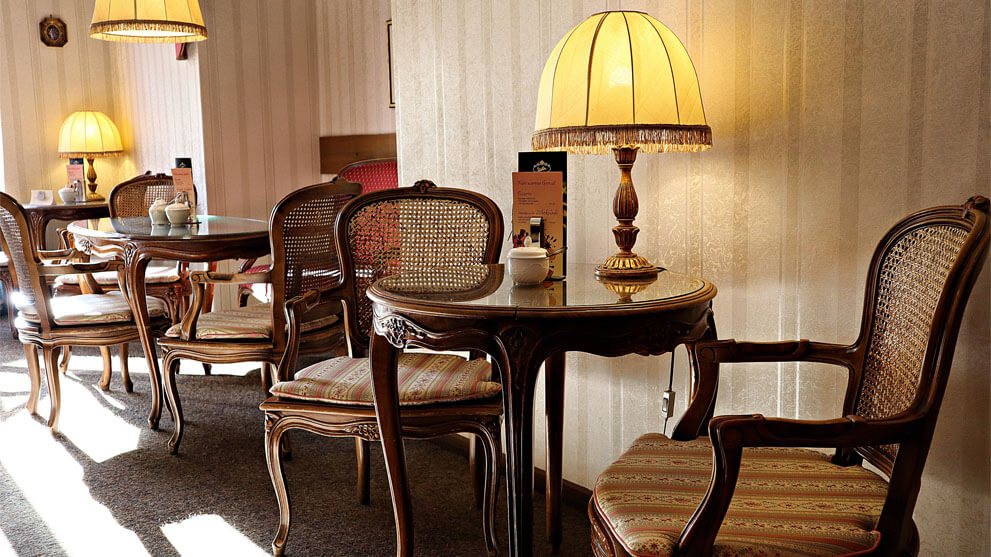
Café
The café is the Viennese's extended living room. This is where people meet, chat or read the (inter)national newspapers. The range of newspapers is usually just as wide as the range of coffees offered on the menus.
There are countless cafés right next to the DeutschAkademie that you can visit after your German course.
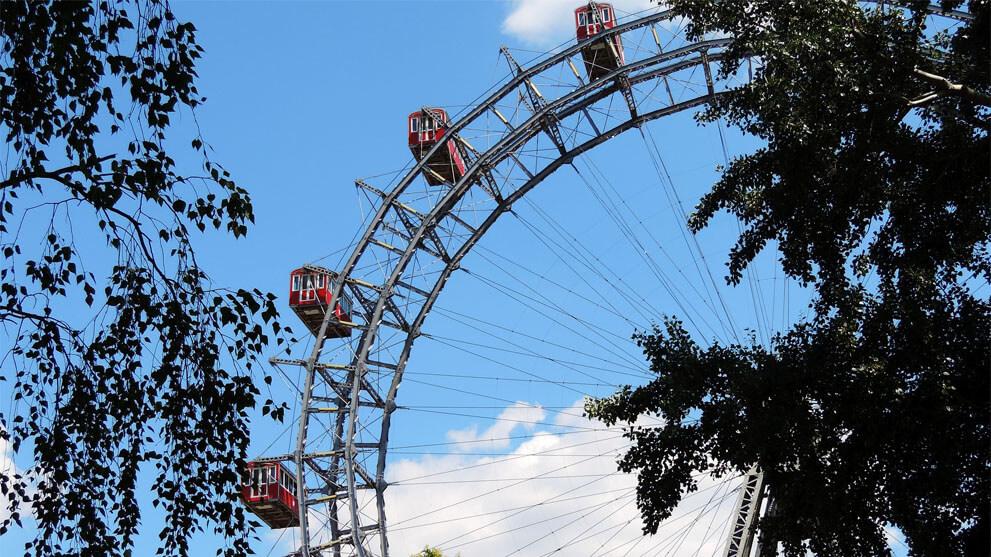
Danube Island Festival
(Distance DeutschAkademie: 15 min. with the underground line U1)
The Danube Island Festival is the largest open-air festival in Central Europe and takes place every year in the second half of June. Over three days, more than two million visitors come to the Danube Island to attend concerts by national and international artists. Admission is free!
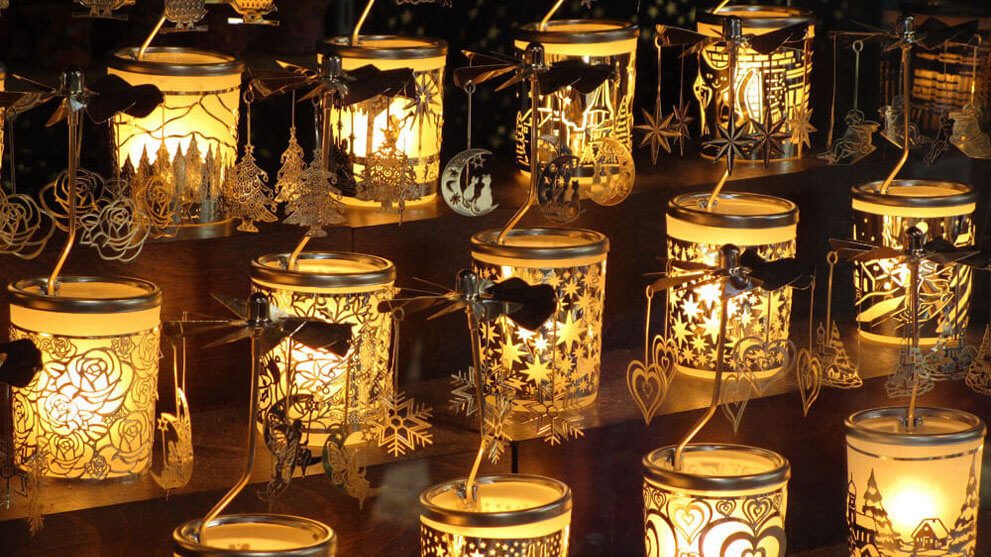
Ensemble Spittelberg
(Distance DeutschAkademie: 10 min. on foot)
In the run-up to Christmas, the Christmas market attracts thousands of people to the Spittelberg in Vienna's seventh district. The beautifully renovated Biedermeier neighbourhood is located on a hill between Burggasse and Siebensterngasse. With its narrow cobbled streets and many cosy cafés, Spittelberg is also a popular meeting place for young people in summer.
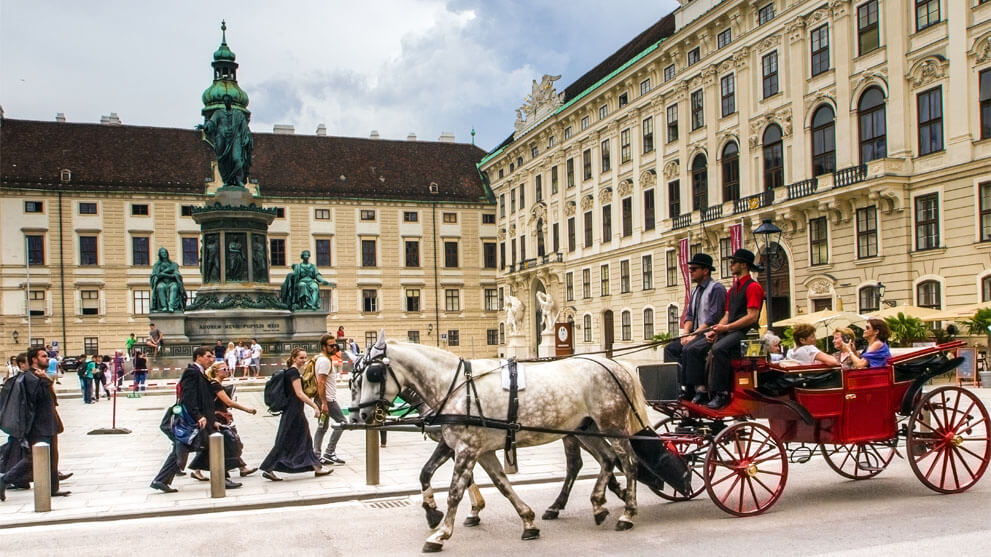
Fiaker
In Vienna, the horse-drawn carriage or the coachman himself is known as a "Fiaker". The city centre is full of horse-drawn carriages and they are also part of the street scene around the DeutschAkademie. The name comes from Paris, where an innkeeper hired out carriages in the Rue de Saint Fiacre from 1662.
Today, hackney carriages are mainly used by tourists for city tours. In the heyday of the hackney carriage, between 1860 and 1908, things were different. Fiakers were the luxury taxis of the time.
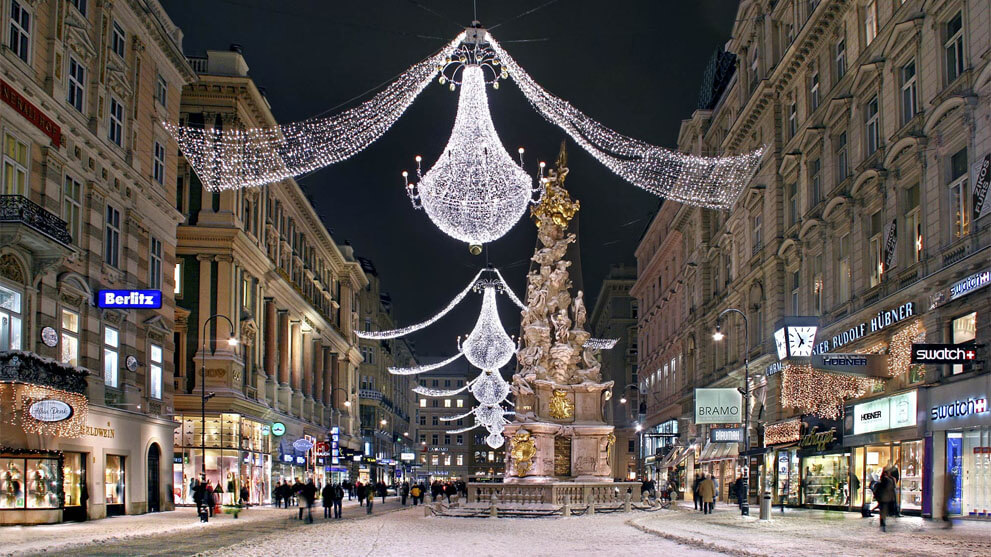
Graben
(Distance from the DeutschAkademie: 6 minutes)
The Graben is Vienna's most elegant, but also most expensive shopping street. Here, one elegant designer shop follows the next. The luxury can even be felt in the public toilets - they were designed by the famous Austrian architect Alfred Loos.
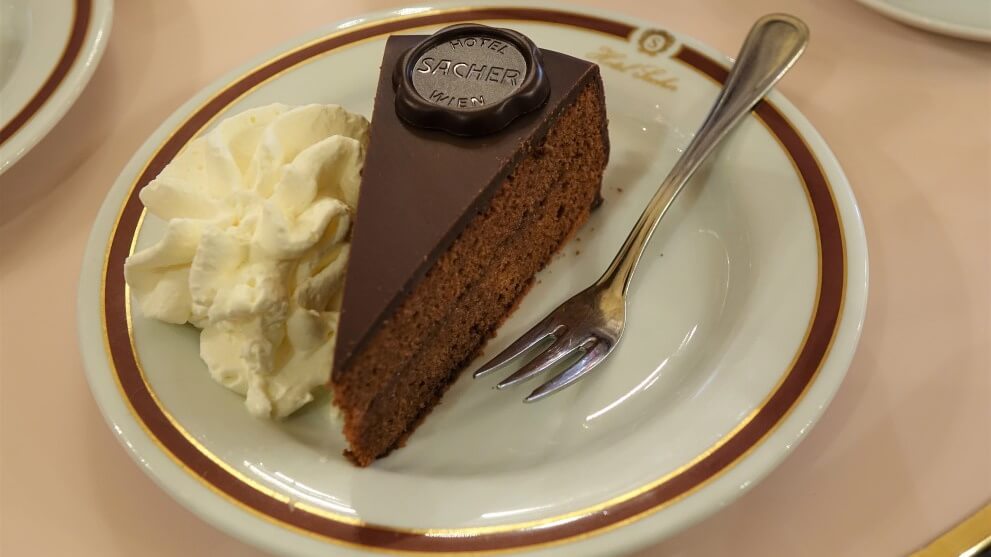
Hotel Sacher
The Hotel Sacher is one of the most famous hotels in Vienna and is located in the immediate vicinity of the DeutschAkademie. The Sacher owes its fame to several things: the original Sacher Torte was created here and is still only made there today according to an old secret recipe. Writers such as Graham Greene and John Irving loved the Sacher for its atmosphere - John Irving even named his dog after the Sacher. So: try a Sacher cake with whipped cream after your German course!
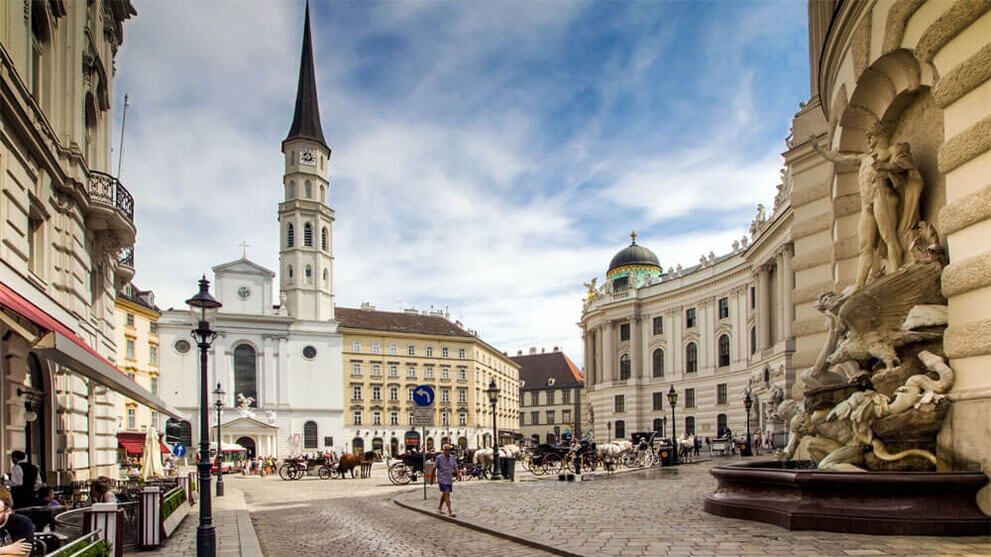
Inner city
(Distance DeutschAkademie: 0 min. on foot)
The first district of Vienna is known as the Innere Stadt. It has been declared a UNESCO World Heritage Site, forms the centre of Vienna and is surrounded by the Ringstrasse like a city wall. The DeutschAkademie is also located in the Innere Stadt, directly on the Ringstrasse, opposite the opera house.
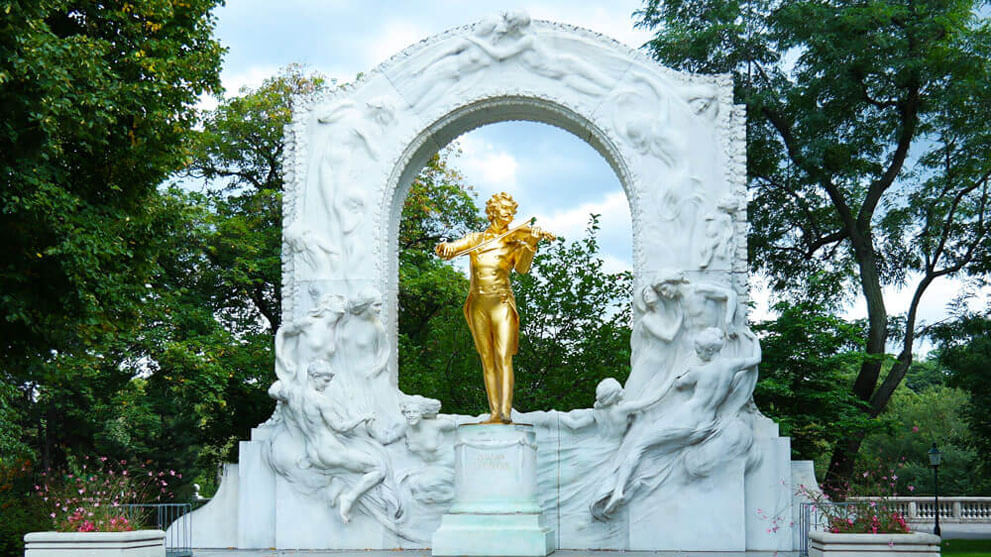
Johann Strauss flat
If you want to know where the world's most famous waltz was composed in 1867, you can visit Johann Strauss Sohn's flat in Vienna's second district. The Danube Waltz is always played at the end of the Vienna Philharmonic Orchestra's annual New Year's concert at the Musikverein.
In the Johann Strauss flat, many objects from the waltz king's possessions are on display - including the famous standing desk at which he composed.
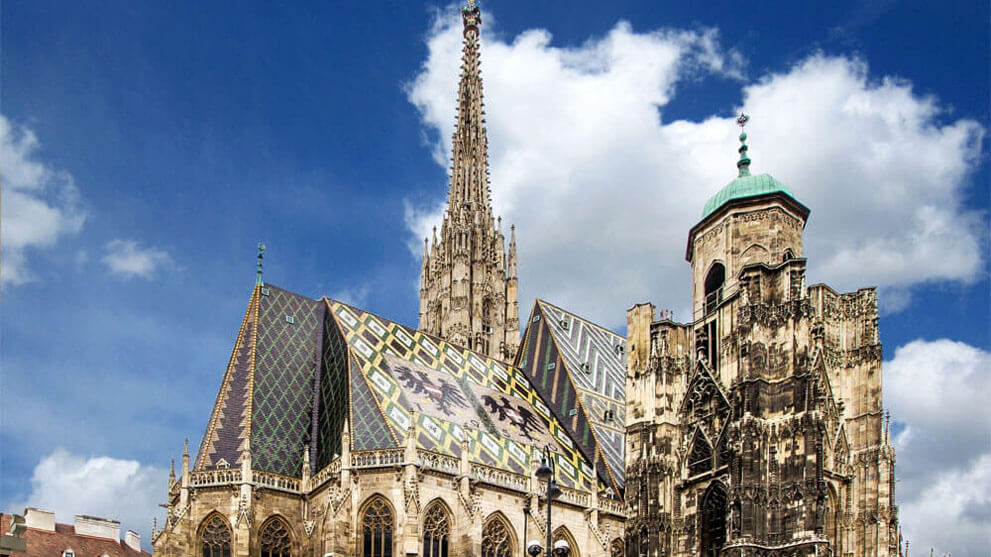
Catacombs
(Distance DeutschAkademie: 5 min. on foot)
St Stephen's Cathedral is Vienna's landmark and has many sights to offer. One of these sights are the underground tombs.
The catacombs house the crypt of the Viennese archbishops and cardinals as well as the ducal crypt, where the urns of the Habsburgs are kept. However, they can only be visited with a guided tour.

Lipizzaner
The white Lipizzaner horses are the most famous horses in the world and are trained in the oldest riding school in the world, the Spanish Riding School in Vienna. It is located in a part of the Vienna Hofburg.
The name Lipizzaner comes from the Lipizza stud farm in Slovenia. You can find out more about the history of the Lipizzaner at the Lipizzaner Museum in the Stallburg of the Vienna Hofburg. With its 18 wings, 19 courtyards and 600 years of construction history (1275 to 1913), the Vienna Hofburg is the most complex and monumental building in the city centre.
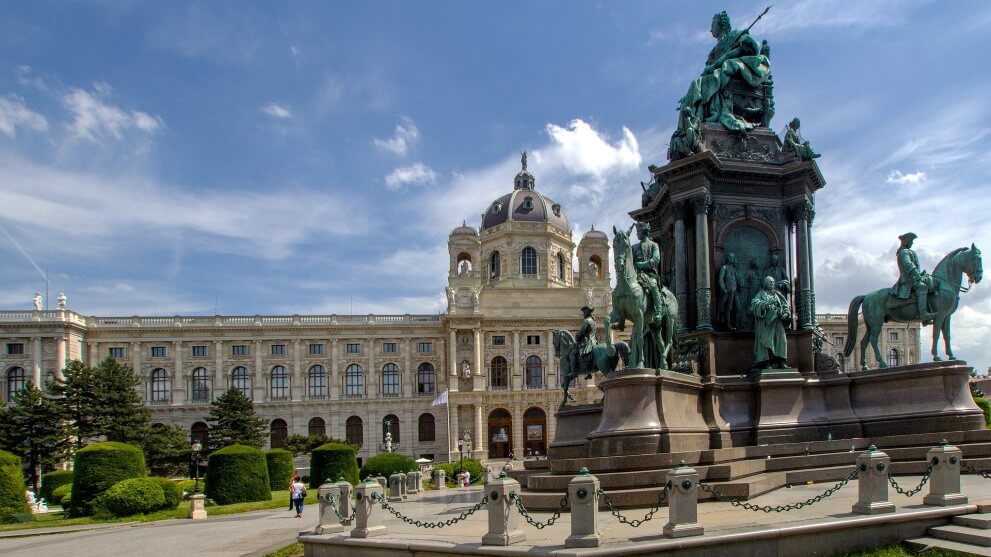
Museum Quarter
(Distance DeutschAkademie: 8 min.)
The MuseumsQuartier is one of the largest cultural districts in Europe. In addition to the three major museums - the Museum of Modern Art (MUMOK), the Kunsthalle and the Leopold Museum - there is also a children's museum, the architecture centre and the quartier 21 in the former imperial and royal court stables. There is also plenty of catering on offer.
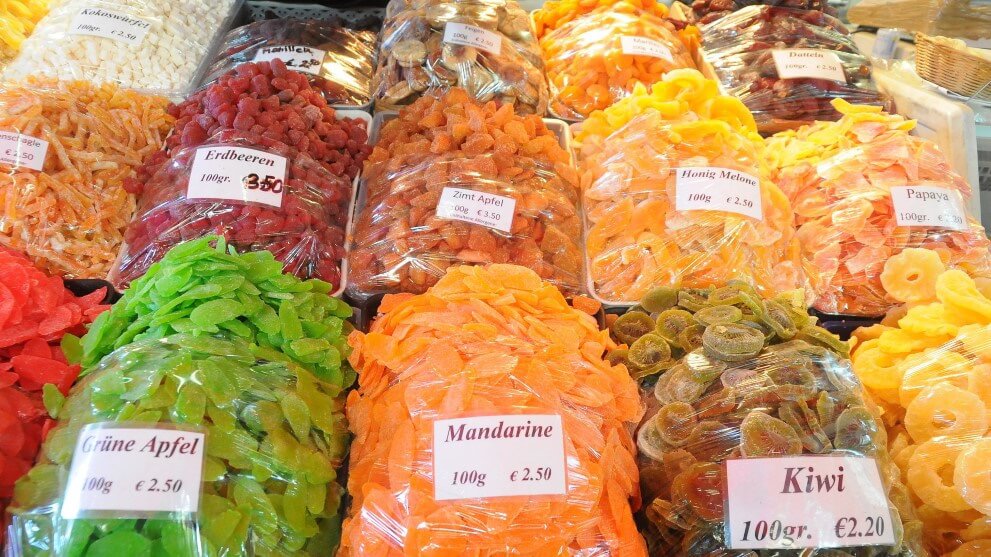
Naschmarkt
(Distance DeutschAkademie: 4 min. on foot)
Even Empress Elisabeth shopped for fruit and vegetables at the Naschmarkt. It was opened in 1780. The surrounding buildings are characterised by Art Nouveau architecture.
Fruit and vegetables are still sold at the Naschmarkt today. It comes from local farmers or is imported from exotic countries. A large flea market is held at the western end of the market every Saturday.
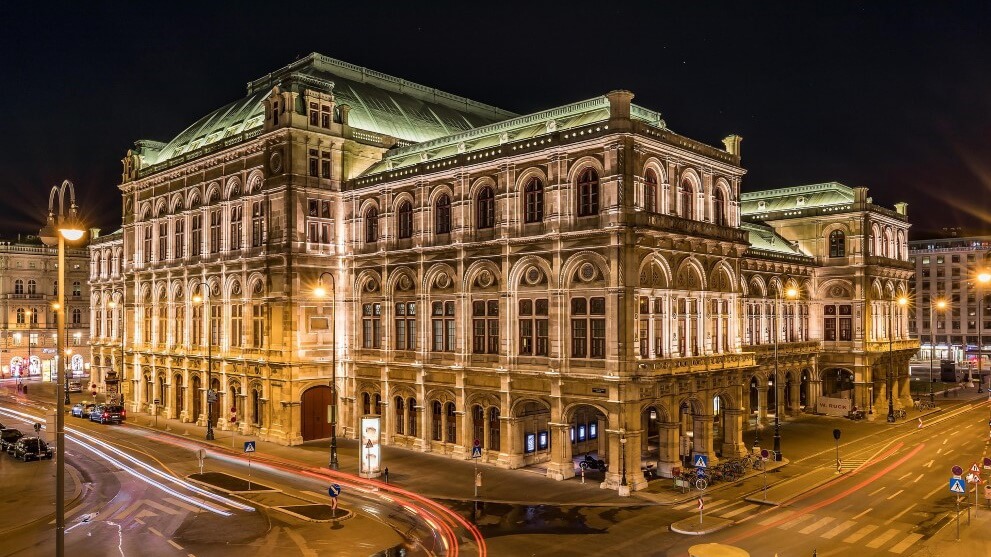
Opera House
The Vienna State Opera is located opposite the DeutschAkademie and offers classical music at its finest, and not just in musical terms. The magnificent rooms are an architectural masterpiece and are therefore the venue for the social highlight par excellence every year: the world-famous Opera Ball takes place in the rooms of the Vienna State Opera every last Thursday of Carnival.
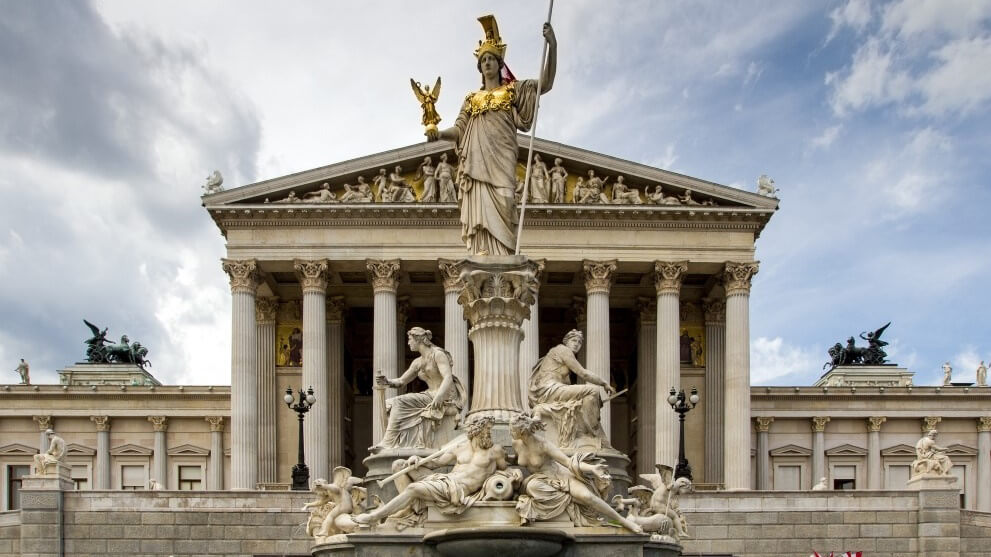
Parliament
(Distance DeutschAkadmie: 5 min. by tram)
The parliament is located directly on the Ringstrasse and was built at the end of the 19th century. Classical Greek forms such as the many columns in the entrance area and the huge sculpture of Pallas Athena were intended to remind us of the country of origin of democracy.
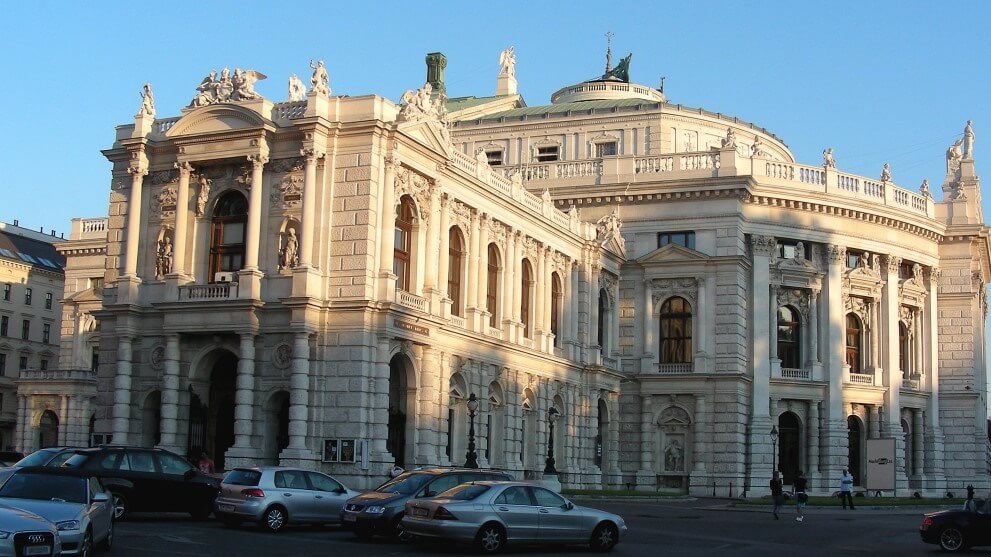
Ringstraße
Vienna's Ringstrasse is one of the most beautiful boulevards in Europe and was built in the 19th century like a city wall around the city centre. It is four kilometres long, almost 60 metres wide, was planned by the eighty best architects of the time and leads past many architectural monuments: the Parliament, the Stock Exchange, the Votive Church, the City Hall, the Burgtheater and the Opera House. The DeutschAkademie is also located directly on the Ringstrasse.
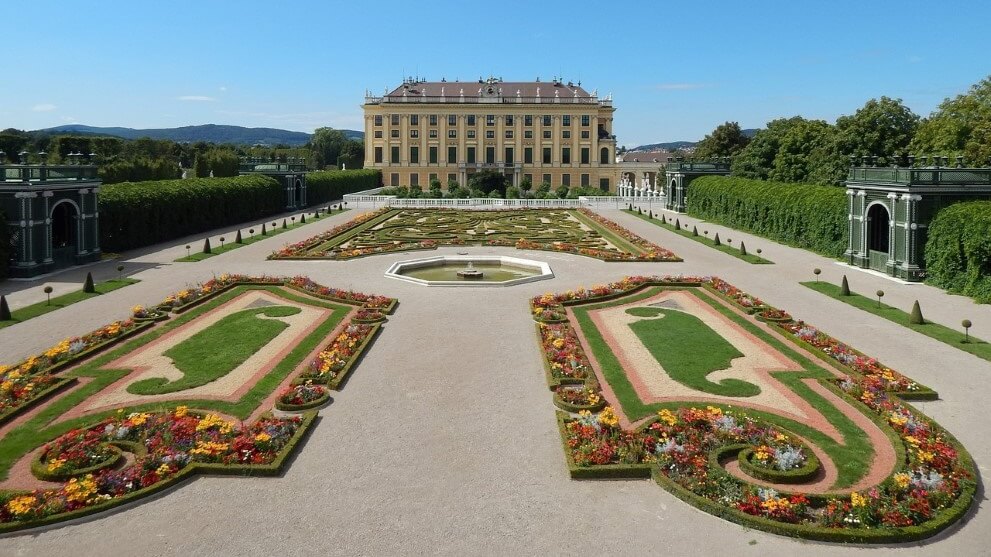
Schönbrunn
The baroque Schönbrunn Palace was the summer residence of the Habsburgs, is located in Vienna's 13th district and is now used by many Viennese as a leisure centre. The spacious gardens and parks attract thousands of joggers and walkers. Schönbrunn also attracts visitors with the palace itself, where the legendary Empress Sissi lived, a beautiful zoo, the idyllic forest swimming pool and cosy terrace cafés. From the Gloriette you have a marvellous view over Vienna.

Technisches Museum
The Vienna Museum of Technology is dedicated to the history of technology and the natural sciences. In addition to interesting display collections, special exhibitions and supporting programmes with lectures, discussions and concerts are organised on an ongoing basis. It is located near Schönbrunn Palace and can be easily reached by public transport.
Address: Mariahilferstraße 212, 1140 Vienna
Opening hours: Monday to Friday - 9 am to 6 pm, Sundays and public holidays - 10 am to 6 pm
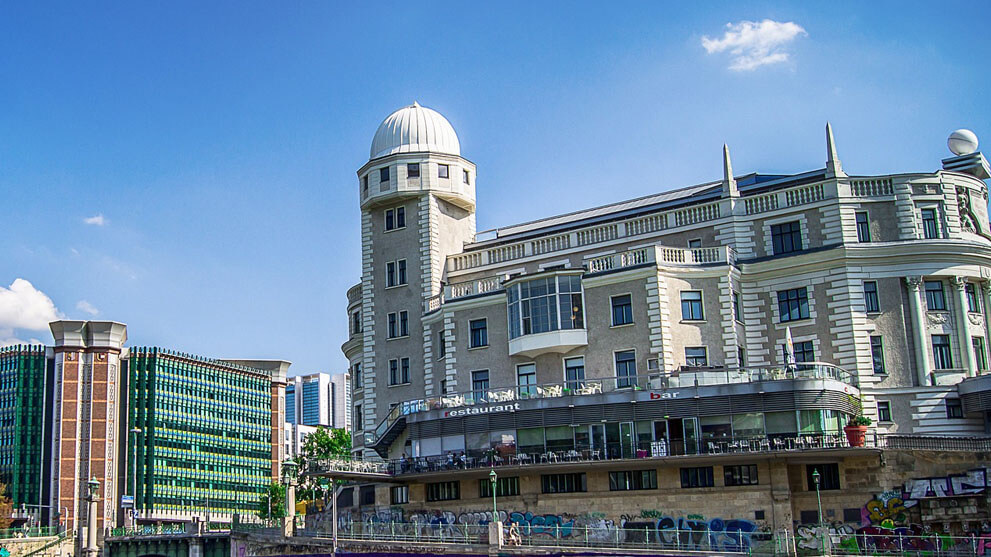
Urania
(Distance DeutschAkademie: 20 min. on foot)
The Urania is located on the Danube Canal and is home to a cinema, an observatory and the Vienna Urania Puppet Theatre. It was opened in 1910 as an educational centre for adults and was built according to the plans of Art Nouveau architect and Otto Wagner pupil Max Fabiani.
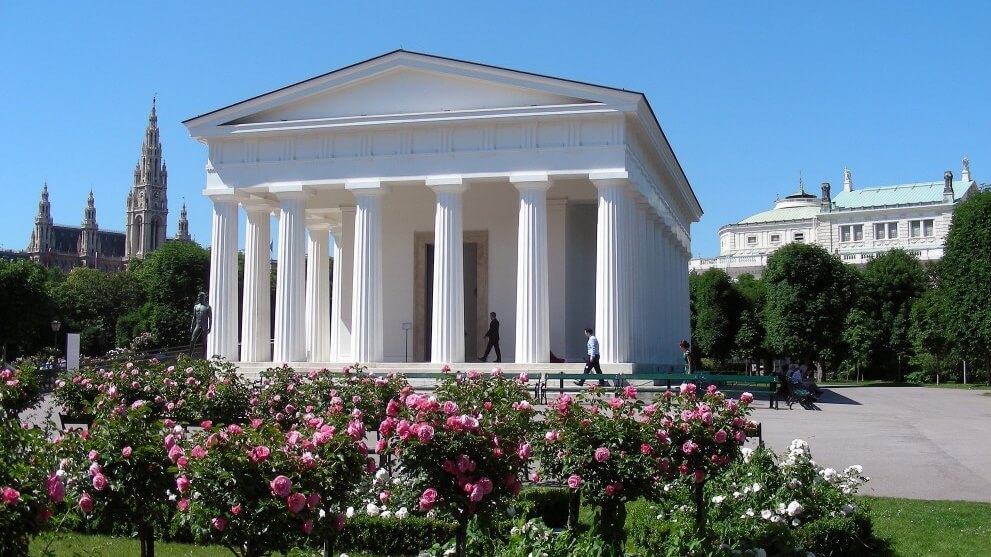
Volksgarten
(Distance DeutschAkademie: 5 min. on foot)
The Volksgarten is located on the Ringstrasse in Vienna's first district. It borders both Heldenplatz and Ballhausplatz in front of the Federal Chancellery. In the first half of the 19th century, the Volksgarten was home to the Cortische Kaffeehaus, where musicians from the Strauss dynasty also gave concerts.
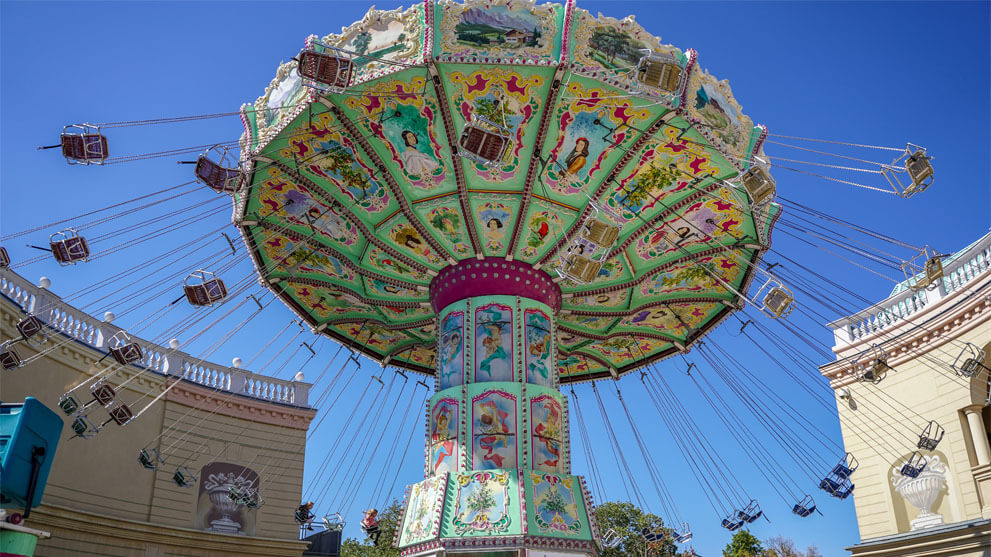
Wurstelprater
The Wurstelprater is the amusement park in the Vienna Prater. It is home to merry-go-rounds, ghost trains and, last but not least, the Ferris wheel. It dates back to 1897 and is Vienna's second largest tourist attraction after St Stephen's Cathedral.
The Wurstelprater is open daily from 10 am to midnight. The main season starts every year in mid-March and lasts until mid-October. Only a few attractions are open outside the main season.

Main cemetery
With 2.5 million graves, the Central Cemetery is Europe's largest cemetery. It is located in Vienna's eleventh district and attracts many visitors due to its spacious green areas, star-shaped avenues, Art Nouveau architecture and prominent dead. In addition to the Austrian pop musician Falco, the composers Beethoven, Mozart (grave of honour) and Schubert are also buried here.